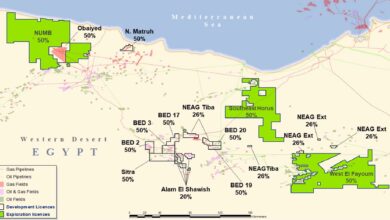BP’s Krieger: Continued collaboration in people, equipment and processes key to enhancing well control

By Joanne Liou, Associate Editor
The industry has taken significant actions to enhance well control. Now, it must continue that momentum to further advance these efforts, based on shared interests and collaboration. BP’s latest energy outlook projects world energy demand to increase by 41% – the equivalent of the current demand from the US and China combined – by 2035, Andy Krieger of BP said. “Meeting demand on that scale will require unprecedented levels of investment, technological innovation and cooperation across industry,” he commented. Speaking at the 2014 IADC Well Control Europe Conference in Aberdeen on 2 December, Mr Krieger, VP of Technical Functions for BP’s Global Wells Organization, urged the industry to focus on people, equipment and processes throughout the entire lifecycle of well operations.
While the recent drop in oil prices will surely challenge the industry to maintain its development and assessment of people, it also highlights a benefit of collaboration: efficiency. “We can share experience, expertise and resources in the non-competitive environment,” Mr Kreiger stated. “Well control training and competency assessment must be rigorous and high quality, and collaboration across industry is what will make that happen.” In 2012, IADC and the International Oil and Gas Producers (IOGP) published OGP Report 476, “Recommendations for enhancements to well control training, examination and certification.” “BP’s own in-house well control training is an eight-day course built on the recommendations of Report 476,” Mr Kreiger added. IADC and IOGP continue to work on addressing crew resource management (CRM) for well operations and have since published guidelines for CRM instruction.
IADC and IOGP have also joined forces to address the BOP. IOGP’s BOP Reliability Taskforce, in conjunction with IADC, launched a joint industry project this year to establish an indsutrywide BOP performance database and to establish standard test protocols and database for shear ram qualifications. “IADC has agreed to manage the BOP performance database, and the shear ram database will be managed by operators with support from service providers,” Mr Krieger said. Similarly, BP has worked with its drilling contractors and OEMs to create an internal BOP reliability database that has recorded more than 500 defect reports. “With data like that, we are truly able to make lasting improvements. We’ve seen significant improvement in BOP reliability across our operations by simply, fundamentally understanding the reason for non-performance or root cause.”
Furthermore, BP’s Global Wells Organization is shifting how it works with its contractors to apply effective standards and procedures. “BP has updated its well control practices and, through our bridging documents, seem to align with our drilling contractor’s safety management systems and their well control policies,” Mr Krieger explained. Earlier this year, BP introduced tablets to all their well sites, enabling the use of apps to verify the effectiveness of procedures and well control barriers. “We’re currently in the process of adding functionality to test the effectiveness and report on our well control drills. The tablet helps facilitate efficient, quick data retrieval from the field to the central office in a way we’ve never had access to before.”
Mr Kreiger noted a number of other completed and ongoing industry collaborations, including API Standard 53, Blowout Prevention Equipment Systems for Drilling Wells. “Our understanding is API Standard 53 will be included in US regulators’ new well control rule. Other offshore regulators are adopting Standard 53 in their expectation for permits to drill,” he said. “Working in a unified way to develop and deliver industry standards gives us a common ground.”
In a collaborative forum, executives from BP, Petrobras and Saudi Aramco, among other operators, drilling contractors and service contractors, have convened under the Well Control Institute (WCI). In November, “we met with a single common goal to prioritize and progress key well control issues. Collaboration starts with leadership,” Mr Krieger stated. “That’s what WCI is all about – providing leadership and a common global industry voice on important issues impacting industry and well control capability.”
Click here to learn more about IADC’s and IOGP’s collaborative efforts.
Click here to learn more about the Well Control Institute.
Click here for IGOP Report 501, “Crew Resource Management for Well Operations teams.”




